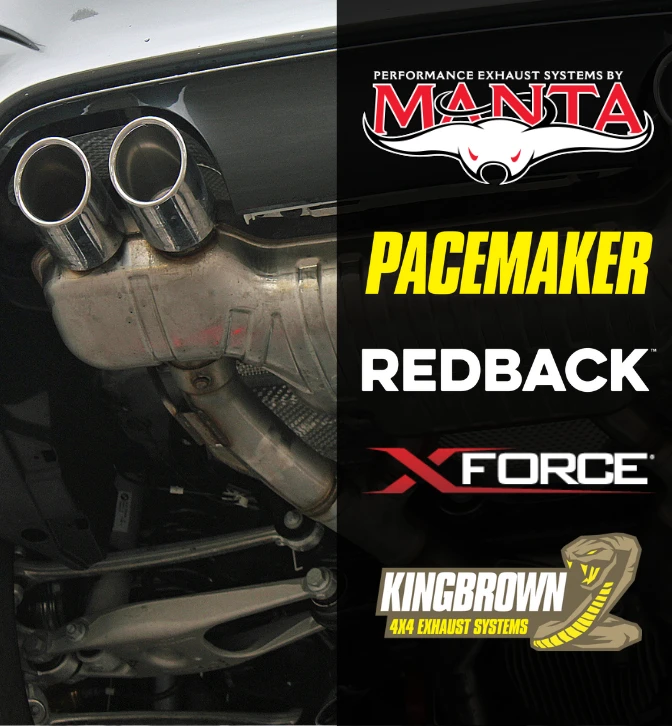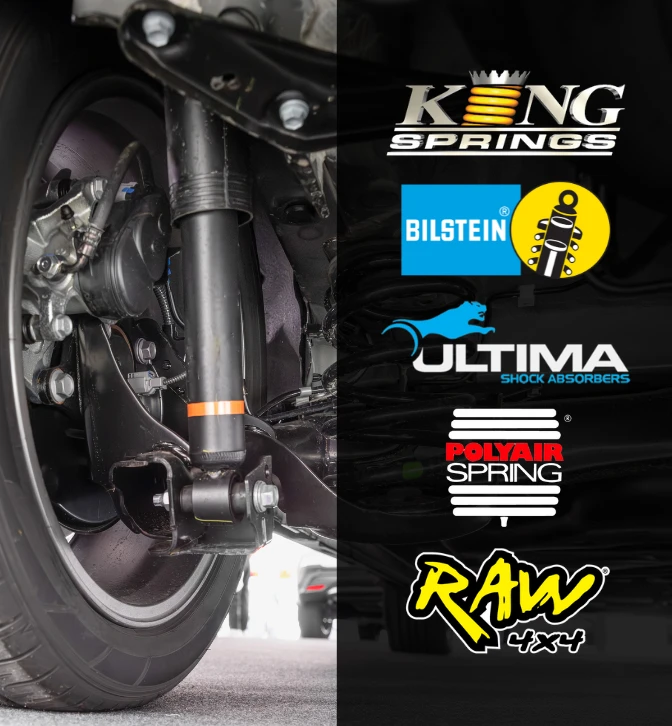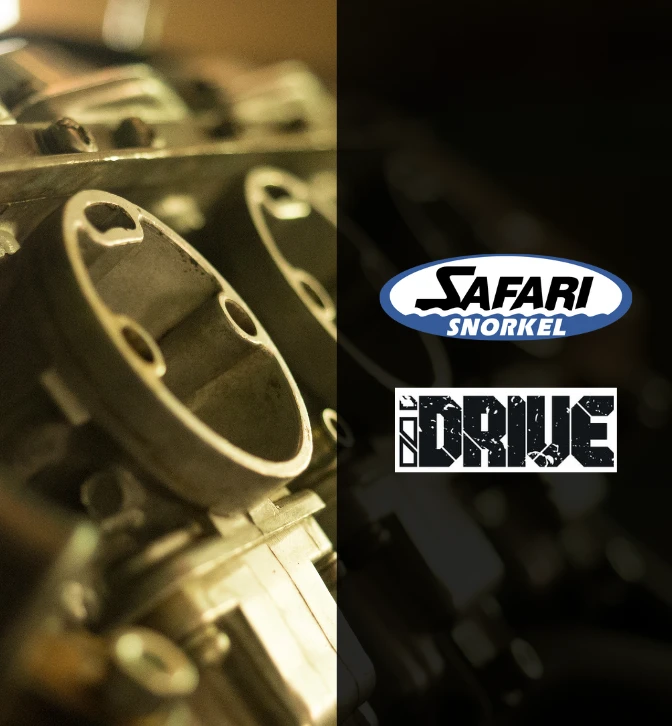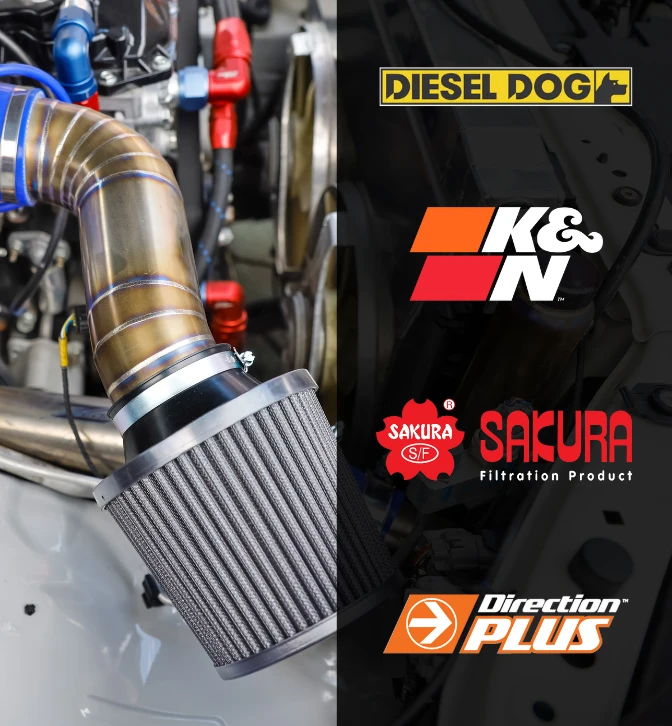-
Exhaust
- Back
- Exhaust
- Performance Exhaust Systems
- Standard Replacement Exhaust Systems
-
Exhaust Accessories
- Exhaust Bolts, Nuts & Studs
- Clamps
- Collectors
- Exhaust Reducers & Couplers
- Exhaust Tips
- Flange Plates
- Exhaust Flex Bellows
- Exhaust Brackets & Hanger Rods
- Gaskets
- Heat Tape
- Mandrel Bends
- O2 Sensors & Exhaust Temperature Sensor Accessories
- Paint
- Muffler & Exhaust Mounting Brackets
- Tube
- X & Y Pipes
- All Exhaust Accessories Products
- Catalytic Converters
- DPF Filters
- Exhaust Extractors / Headers
- Universal Mufflers & Hotdog Mufflers
- All Exhaust Products
![Exhaust]()
- Suspension
- Performance
- Towing
- Filters
- Truck
- On Sale
- About Us
- Blog
- Contact Us
The Ultimate Guide to the Different Types of Exhausts
Date Posted: 23 April 2024
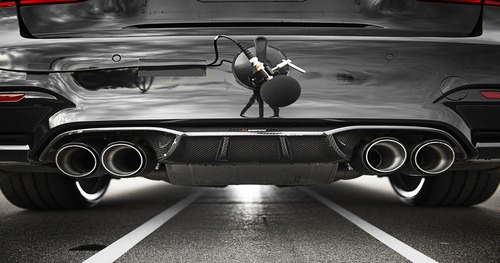
Ever found yourself standing by the roadside, a powerful car zooms past, and its exhaust note hits you like a wave of pure adrenaline? It's not just about noise. It's an art form, sculpted through the intricate engineering of the many different types of exhausts. Each configuration sings a different tune - from the deep growl of a high-performance system to the subtle hum of a stock setup.
But with a myriad of configurations and types of exhaust available, navigating through the options can indeed seem daunting. So allow us to help you out. Let’s discuss the different types of exhaust that exist, how they impact your car’s performance, what their advantages and disadvantages are, and what you should keep in mind when choosing an exhaust upgrade.
Understanding the Basics of Car Exhaust Systems
An exhaust system isn't just a tube that funnels smoke away from your car's engine, it’s much more than that. In short, this complex arrangement starts with the exhaust manifold collecting gases from each cylinder and merging them into one pipe. From there, these gases travel through the catalytic converter, flow through the muffler, and finally exit out the back via your tailpipe. All of this means that besides simple gas expulsion, your exhaust system also:
- Muffles engine noise to reduce cabin noise levels and maintain driving comfort.
- Maintains optimal backpressure levels to improve engine performance and fuel efficiency.
- Enhances scavenging efficiency to remove exhaust gases from the combustion chamber, promoting better engine breathing.
- Affects turbocharger spool-up time and performance by managing exhaust flow and backpressure.
- Improves engine power and torque output by optimising exhaust flow and minimizing restrictions.
- Efficient exhaust systems contribute to better fuel economy by reducing engine workload and improving overall efficiency.
Now, let’s talk about the different types of exhausts that you can fit onto your vehicle.
Single and Dual Exhaust System Setups
A single exhaust system is the basic type of exhaust that utilises a single pipe to expel exhaust gases from the engine. They are a common factory-installed option in many vehicles. With a simpler design compared to dual exhaust systems, they are typically more cost-effective both in terms of initial purchase and maintenance.
Single exhaust systems are known for their efficiency in expelling exhaust gases, ensuring proper engine performance and fuel efficiency. Additionally, they can provide a moderate boost in horsepower and torque, making them suitable for everyday driving needs. If you're looking for a practical and budget-friendly option, a single exhaust system might be the right choice for you.
On the other hand, dual exhaust systems employ two separate pipes to expel exhaust gases from the engine. This setup offers several advantages over single exhaust systems. Firstly, dual exhausts can enhance engine performance by improving exhaust flow, resulting in increased horsepower and torque. Additionally, they often produce a deeper and more aggressive exhaust note, appealing to performance enthusiasts.
Dual exhaust systems also distribute the workload between two pipes, reducing back pressure and promoting smoother engine operation. While typically more expensive than single exhaust systems, the benefits in terms of performance and sound quality make dual exhausts a popular choice for those seeking a sportier driving experience. If you prioritise performance and sound, dual exhaust systems may be the ideal option for you.
However, dual exhaust systems can present challenges such as space limitations, intricate installation procedures, and higher costs compared to single exhaust setups. A dual crossover system mitigates most of these drawbacks. By incorporating a crossover pipe connecting the two exhaust pipes, this design equalises exhaust pressure between cylinders, enhancing scavenging efficiency and reducing backpressure.
This results in smoother engine operation and improved performance. Moreover, the dual crossover system minimises exhaust drone and balances the exhaust note, providing a more pleasant driving experience. Overall, it resolves the disadvantages of standard dual exhaust systems while optimising engine performance and sound quality.
3 Types of Performance Exhausts
.jpg)
Stock exhausts are factory-installed exhaust systems in vehicles. They are designed to meet emissions regulations while providing adequate exhaust flow for engine performance. Stock exhausts typically feature standard components and configurations specified by the vehicle manufacturer, prioritising durability, noise reduction, and cost-effectiveness.
However, that’s not what we’re discussing here - we’re discussing performance exhausts and there are three main types:
Cat-Back Exhaust
A cat-back exhaust system replaces everything from the catalytic converter right back to the muffler. What does this mean for you? Improved fuel economy, better gas flow, and a stronger sound. They’re especially popular among enthusiasts looking for both performance gains and auditory enhancement without breaking the bank (or getting into legal trouble as they keep factory catalytic converters intact). The advantages of this type of exhaust are:
- Better Performance: Freer exhaust flow lets your engine breathe easier.
- Louder Sound: You get a deeper, more resonant rumble.
- Fuel Economy: An open system means less fuel burn during acceleration.
Axle-Back Exhausts
Moving onto axle-back systems now. They focus on replacing just the parts from the rear axle to your car's backend - including the all-important muffler. Axle-back exhausts, while often seen as less dramatic than their cat-backed cousins in terms of power gains, are cheaper and simpler to install but still give you some sweet perks regarding noise level adjustments without dipping too much into savings or effort levels. They're perfect if you want ’that sound’ without extensive work underhood. Their advantages are:
- Easier Installation: When comparing cat-back vs. axle-back systems, the axle-back exhaust upgrade is easier to install.
- Less Expensive: Compared to cat-back exhaust upgrades, an axle-back upgrade is typically cheaper.
- The Sound Factor: You still get that loud sound, if that’s what you’re looking for.
Turbo-Back Exhausts
The final type of exhaust is the turbo-back. Turbo-back exhaust systems replace the entire exhaust system from the turbocharger outlet to the rear of the vehicle. This setup includes a downpipe, which connects the turbocharger to the rest of the exhaust system, as well as a high-flow catalytic converter and a performance-oriented muffler. Turbo-back exhausts offer significant improvements over stock systems
- Reduced Backpressure: Enhanced exhaust flow reduces backpressure, allowing the turbocharger to spool up faster and increasing overall engine efficiency.
- Lighter: Reduced weight compared to stock exhausts can improve vehicle handling and fuel efficiency.
- Stronger Exhaust Note: Like the cat- and axle-back, the turbo-back also modifies the exhaust note and adds a sporty sound.
Materials and Construction of Exhaust Pipes
When discussing the different types of exhausts and how they affect your vehicle, you should also consider the materials that the pipes are made from as well as how the pipes are made to bend.
Stainless Steel vs. Mild Steel for Exhaust Material
Stainless steel is the standard, renowned for its resistance to rust and wear. Most high-end types of exhaust will have pipes made from stainless steel. The other option is mild steel. It's more flexible but requires a bit more maintenance to prevent rusting. Stainless steel withstands harsh conditions better, while mild steel can be more budget-friendly.
Choosing Between Mandrel and Crush Bends for Your Exhaust System
Besides the materials, the way the pipes bend is also crucial. Mandrel bends, with their smooth curves, allow exhaust gases to flow freely, reducing backpressure and enhancing performance. They're extremely precise but come with a price tag that mirrors that quality craftsmanship. Crush bends are literally rough around the edges. While they are cheaper upfront due to simpler production methods, they restrict gas flow by creating bottlenecks where power can get trapped trying to navigate through tight spaces. The choice between mandrel or crush bends boils down to balancing cost against efficiency gains: do you save now but potentially pay later for diminished performance?
The Impact of Aftermarket Exhaust Parts on Performance

Ok, so we’ve discussed the types of exhaust systems that exist. If you’re reading this because you are thinking of upgrading your exhaust, we should also touch on the pros and cons of aftermarket exhaust upgrades.
First off, swapping out the stock system for aftermarket exhaust systems can be like giving your engine an energy drink. You’re getting better horsepower and torque because these systems let your engine breathe easier. Airflow is king, and more air means more power.
Second, and this might come as a surprise but upgrading to high-performance exhaust parts can actually help improve fuel economy. Less restriction equals less work for your engine to get rid of exhaust gases which translates into slightly better mileage over time.
Third, many aftermarket parts are made from premium materials like stainless steel or even titanium in some cases. This means they’re built to last longer than their stock counterparts that might rust or wear out faster under the same conditions. And finally, the exhaust note - you can tailor aftermarket exhaust systems so that they produce the specific sound you want.
Maintenance Tips for Long-Lasting Performance
In the end, let’s talk about maintenance a bit because, let's face it, we all want our rides to run smoothly and sound even smoother. But ensuring your exhaust system remains in pristine condition requires a combination of diligent effort and knowledgeable upkeep strategies to avoid common exhaust system issues. So, at minimum, you should:
Keep It Clean
Dirt, grime, and road salts aren't just an eyesore - they can lead to corrosion of your exhaust components. A regular washdown of the undercarriage will do wonders in keeping those parts gleaming and functioning as they should.
Listen Up
The first sign that something's amiss? Weird noises. If your car starts sounding like a lawn mower or you hear rattling from the exhaust area, don’t ignore it. This could indicate loose parts or worse - holes developing due to rust.
Routine Checks Are Key
Regularly check for exhaust leaks as even small leaks can impact performance significantly because they allow exhaust gas to escape before it passes through the muffler fully. Also, keep an eye out for signs of rust or holes on the pipe walls themselves which can affect the overall integrity of your system. Finally, because your catalytic converter plays a crucial role in reducing emissions ensure it isn’t clogged or damaged as well.
Where Can You Get the Best Aftermarket Exhaust Upgrades?
At Perform-Ex Auto, we have all the types of exhausts you could ever want. Check out our range of exhaust system upgrades to find affordable performance parts from the best brands in Australia. From entire performance exhaust systems to individual catalytic converters to exhaust accessories, we have what you need.
Simply place your order online and we’ll deliver it right to your address. And in case you need help with choosing the right type of exhaust that would work best for your car, feel free to contact us, we will gladly assist you in any way we can.
Leave a comment


